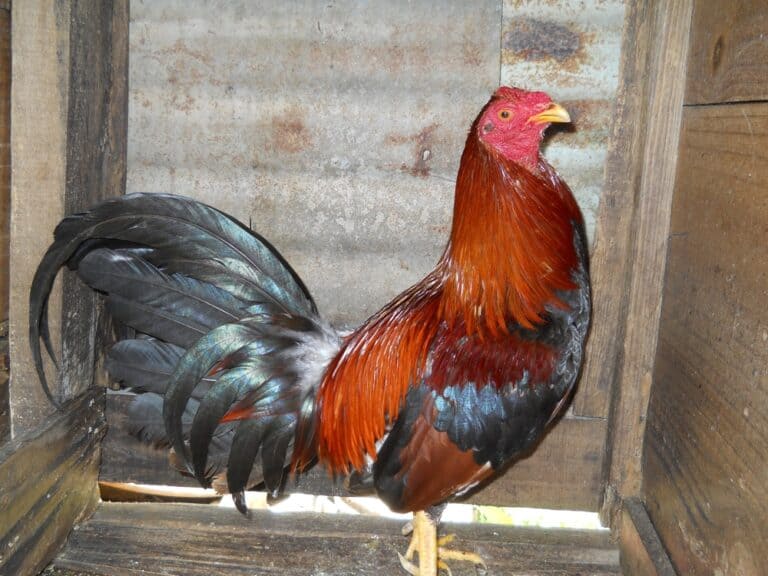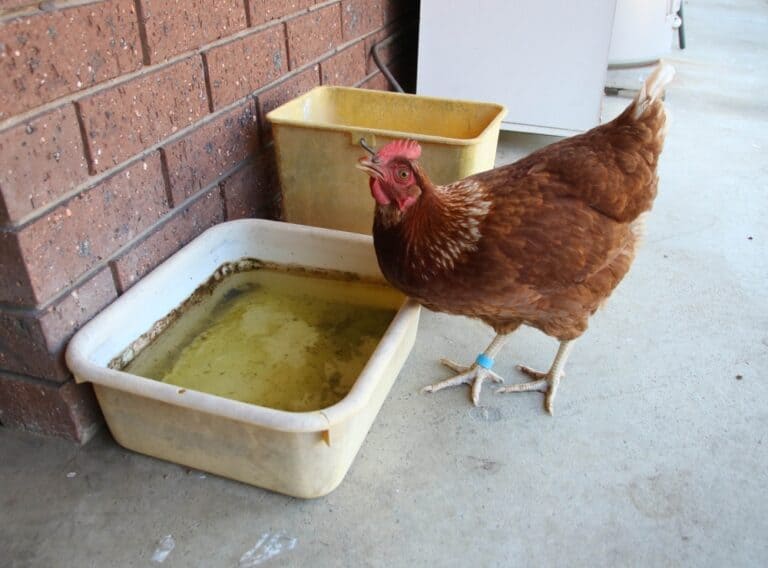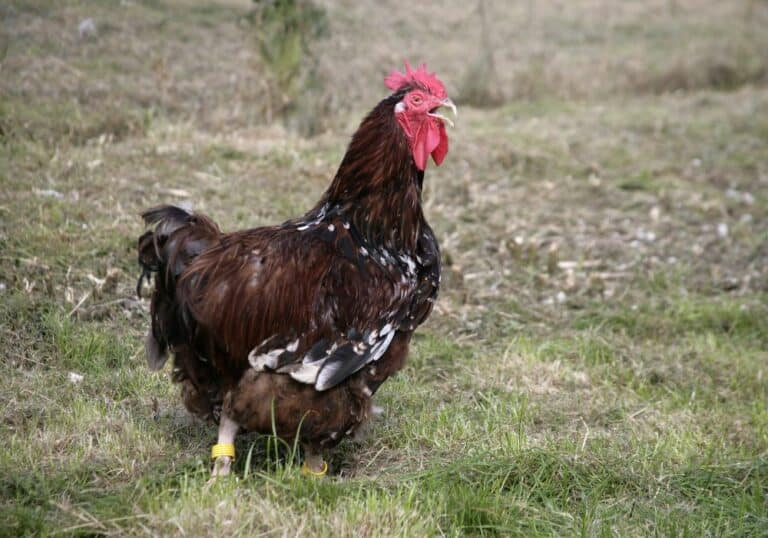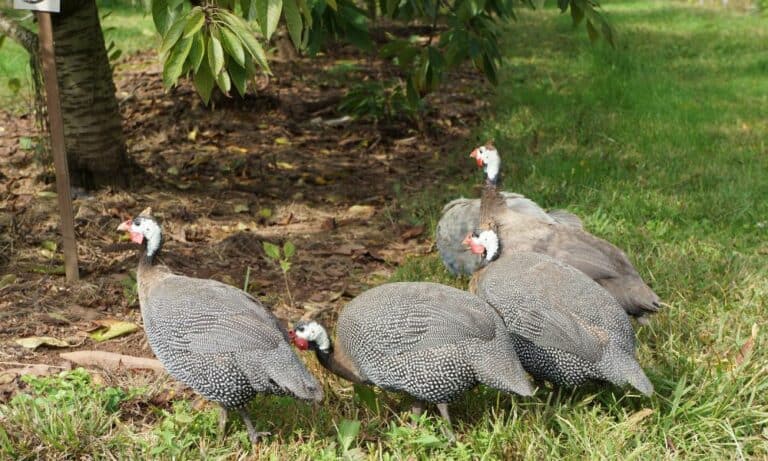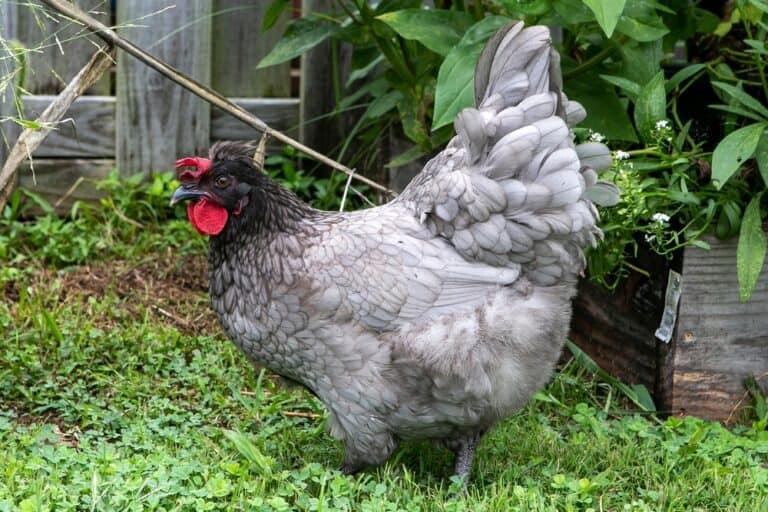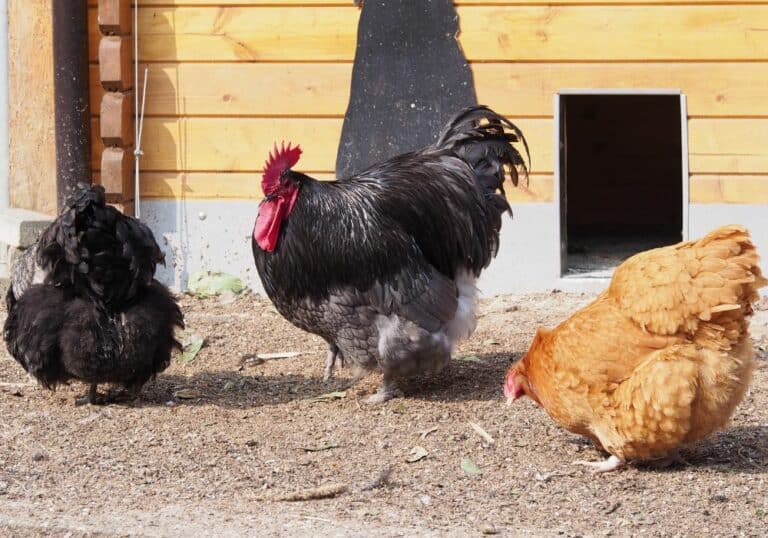Rosecomb Bantams are one of the oldest chicken breeds in existence today, and with good reason. Despite their small size, these birds are hardy and adaptable, and they’ve evolved into one of the most popular ornamental breeds.
The Rosecomb Bantam isn’t a popular choice for egg production or the egg-to-table pipeline. Instead, breeders have spent centuries developing dozens of color varieties and honing in on an even-tempered, amicable bird.
There’s so much to learn about the breed, from where they got their start to what special care requirements they have. Let’s get started!
Rosecomb Bantam Origin
Rosecomb Bantams are largely considered true bantams, meaning that they’re a naturally small breed and not a smaller version of a larger originating chicken breed. This means that no selective breeding went into the creation of their small size.
Because Rosecomb Bantams are known to exist as early as the 14th century in Great Britain, many consider them the original Bantam breed to exist. Regardless, the popularity of the breed is largely attributed to the place they held in King Richard III’s heart.
One alternative to this theory is that they are a smaller version of the Hamburg chicken, but this is mostly due to the fact that the Hamburg was used to refine feathering and earlobe coloration in the development of the Rosecomb Bantam breed.
It’s unclear when the breed first crossed the Atlantic ocean, but we know they were shown at the first North American Poultry Exhibition in 1849. Rosecomb Bantams were also present in the first edition of the American Standard of Perfection published by the American Poultry Association in 1874.
Today, Rosecomb Bantams are mainly raised as ornamental snowbirds or pets. They’re poorly suited for meat and egg production, but the unique appearance and temperament of the breed has earned them a loyal following.
Rosecomb Bantam Appearance
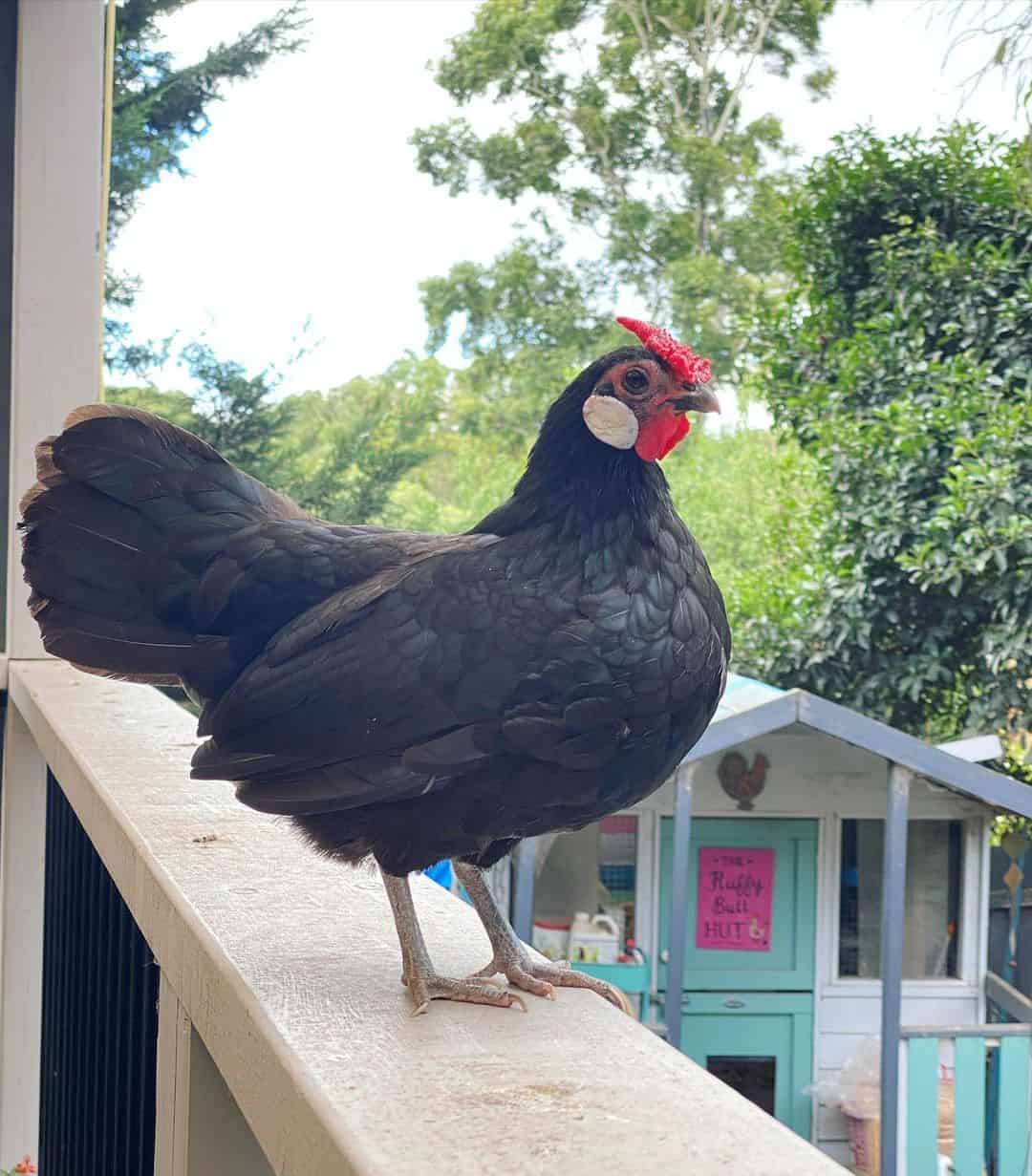
The Rosecomb Bantam Federation refers to the chickens as “beautiful little aristocrats of the bantam world”, and this only serves to underline their striking appearance.
As a small breed, roosters max out around 26 ounces while hens reach a maximum of 22 ounces. Despite their diminutive size, they stand tall and proud with their head held high, long-feathered tails upright and draping behind them, and wings that point down to emphasize their stature.
Rosecomb Bantams are named for the rose comb atop their head. Per the breed standard, this should have a square front, even sitting, and a rounded spike from base to tip.
In the past, Rosecomb Bantam breeders would carve at the combs of their flock to meet the desired appearance. Now, judges respond strictly to any signs of modification on the birds.
The Rosecomb Bantam has a fierce face to offset its size, with a short, strong curved beak and bold, striking eyes.
Another distinct feature of the Rosecomb Bantam is its striking white earlobes. These are larger than most other breeds, and they sit flat on the bird’s cheeks. The earlobes have rounded edges that help them blend nicely, although nothing would hide the chalky white appearance.
There are as many as 25 color variations known to the Rosecomb Bantam, although only three (black, blue, and white) are recognized by the American Poultry Association.
Other color varieties include:
- Mottled
- Black Breasted Red
- Lemon Blue
- Blue Red
- Brassy Black
- Brown Red
- Splash
- Red Pyle
- Wheaten
Their feathers are multi-toned, and will often have a red, green, or blue sheen that reflects in the sun and brings more depth to their appearance.
Rosecomb Bantam Temperament

Rosecomb Bantams are known as a tender and easy to care for breed. While roosters will always be a bit more aggressive and have protective tendencies, they remain one of the most suitable chickens to keep around small children and other animals.
Rosecomb Bantams are not inclined to broodiness, decreasing the chance of aggression in hens, and they mature slowly. They prefer to live in close relation to their human keepers, and they’re predisposed to hand-taming.
This doesn’t mean that the small chickens are pushovers, and they will act out as needed to secure their territory and protect their flock. Rosecomb Bantams are every bit as proud as they appear, but they seem to keep their behavior in check better than more aggressive breeds.
They’re a curious breed and will explore if given the opportunity. If you’re not careful, the strong wings of the Rosecomb Bantam can carry them away. They’re capable fliers and foragers, but they’ve spent centuries as domesticated birds and need an enclosure capable of keeping them safe.
Keeping Rosecomb Bantams With Other Pets
Rosecomb Bantams will get along with other animals, but you need to introduce them properly and take proper precautions whenever they’re around each other.
Make sure you socialize your Rosecomb Bantams with other animals while they’re young to limit the chance they see the animal as a threat. This is more important for smaller cats, dogs, and other animals that can be seriously damaged by a rogue rooster’s sharp spurs.
It’s important to never assume the two animals are friendly enough to leave them alone together. Supervision should allow you enough time to intervene if there’s an issue, but it wouldn’t take much for a larger animal to take the small chicken out of commission.
Rosecomb Bantams as Ornamental Birds and Breeders
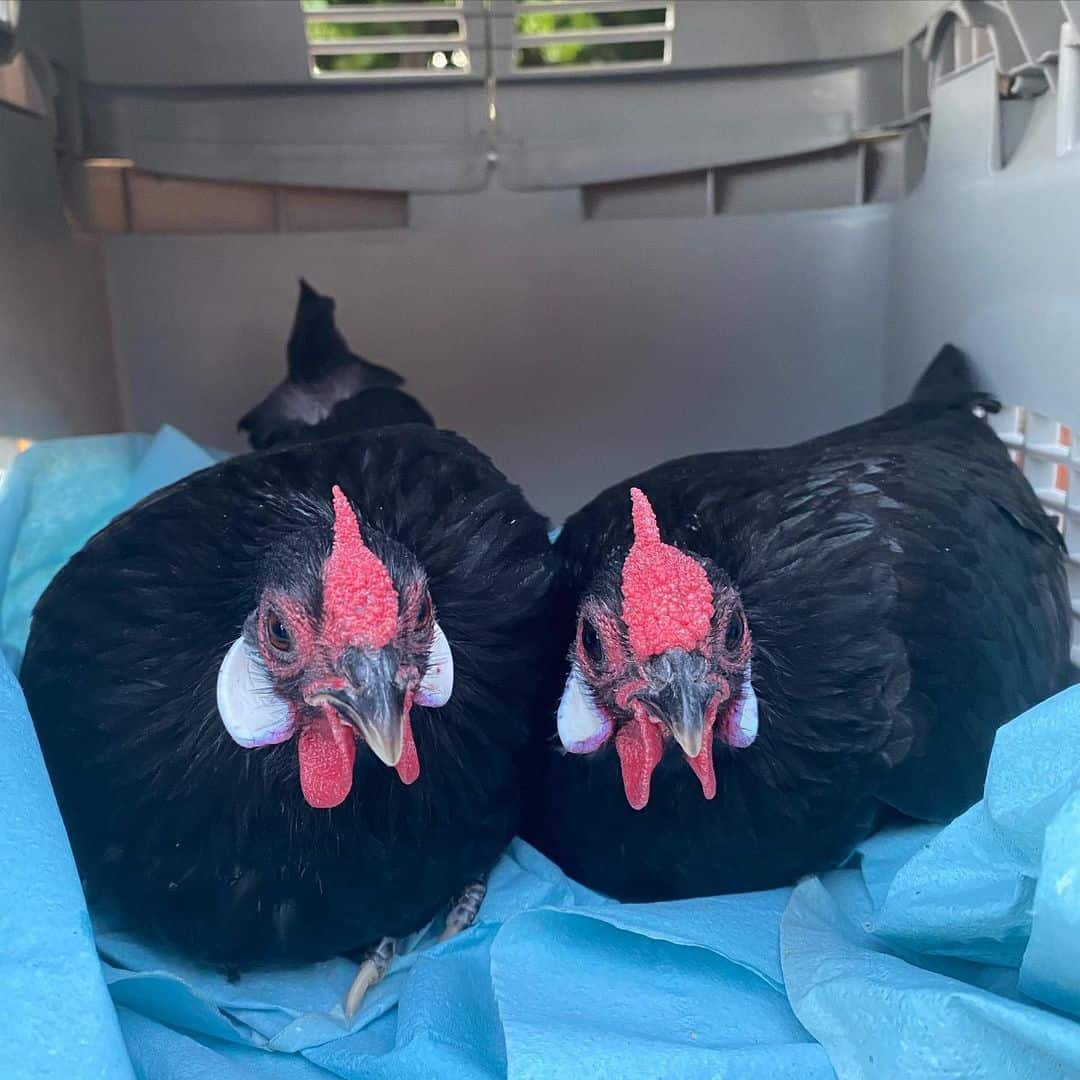
While the focus for raising chickens seems to be on meat and egg production, Rosecomb Bantams are ill-suited for both industries. Instead, they’re best kept by experienced chicken keepers who have an affinity for raising the breed.
Rosecomb Bantams only lay about one egg per week, although some birds will double this. On top of this, the breed is known to have lower hatch-rates, so breeders must be dedicated in their endeavor.
Luckily, there are several loyal to the breed, and you can find birds easily for anywhere from $4 to $10 (although show birds and breeding stock often go for more).
Rosecomb Bantams observe the normal breeding season in the spring. You will often see the males circling females in their attractive dance, bowing with one wing. Once the ritual is complete, the rooster will mount the female for about 15 seconds, hopefully fertilizing her eggs.
For the best chances of continuing this ornamental chicken, breeders aim for mating every few days. Eggs should be fertile for up to 14 days after mating, and the Rosecomb Bantam is unlikely to go broody.
Caring for Rosecomb Bantams
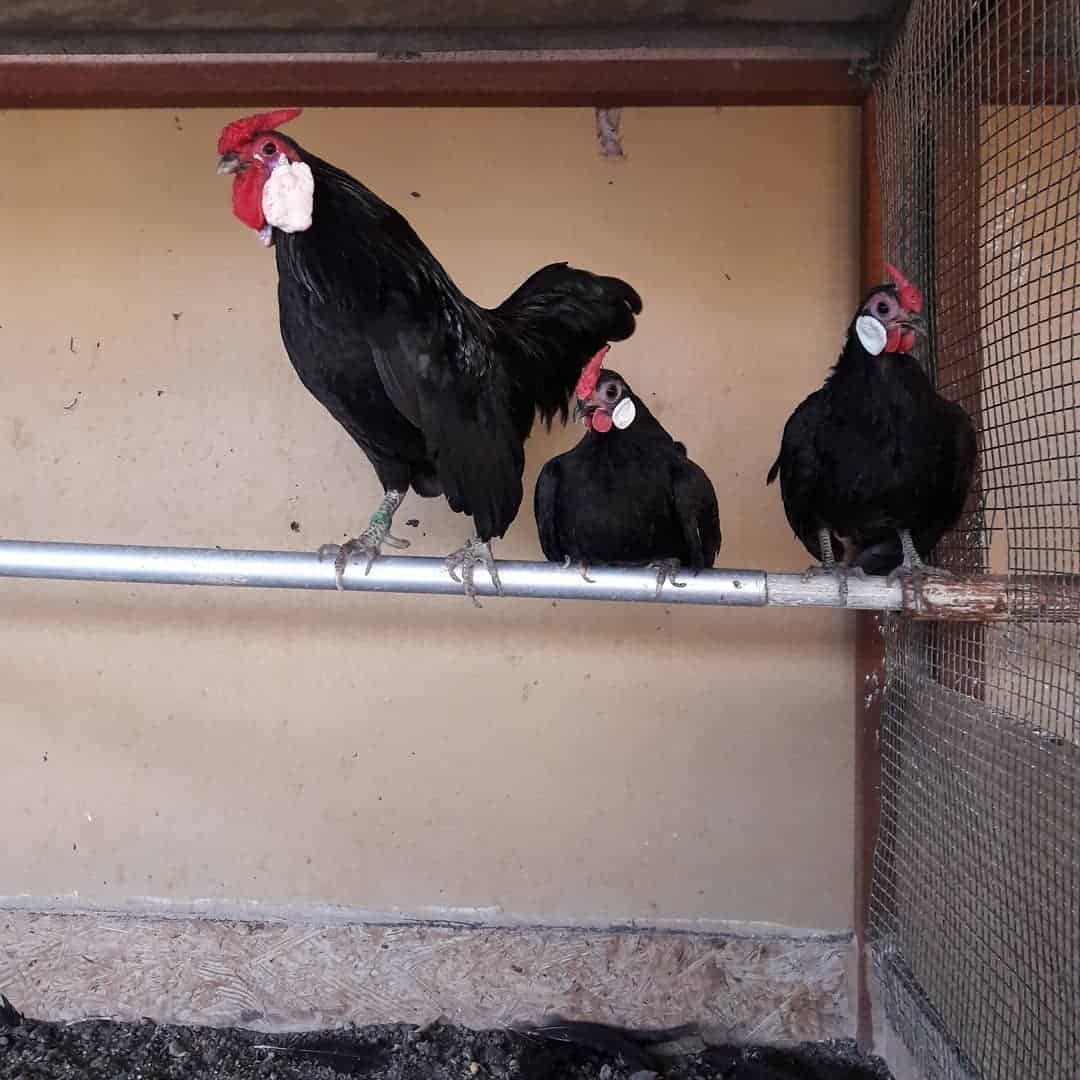
Rosecomb Bantams are a slow-maturing breed, and they require special care for a longer time until they become fully feathered. This doesn’t mean that they need anything out of the norm for rearing young chicks, but rather that they need it for longer.
As adults, the main issues to worry about with Rosecomb Bantams are their predisposition to overeating and the difficulty in sheltering them.
Rosecomb Bantams are still susceptible to issues like infectious coryza, worms, and other intestinal parasites, but these are the unique issues you may not see in other breeds.
Preventing Overeating
Smaller breeds like the Rosecomb Bantam are prone to overeating, especially if you treat them more like house pets than livestock.
The first step at preventing overeating and excessive weight is making sure you offer a wholesome base diet of chicken mash, pellets, or crumbles. This prevents the chicken from picking and choosing what they eat, giving them better baseline nutrition.
Fresh fruits and vegetables should only make up about 10 percent of their diet, and the focus should be on nutrient-rich foods rather than sugary bites.
Rosecomb Bantams should have an opportunity for exercise that matches their diet. Adding ramps and enrichment opportunities can be just as effective as providing more space, and cutting back the amount of food offered should be a last resort if an issue occurs.
Proper Shelter for Rosecomb Bantams
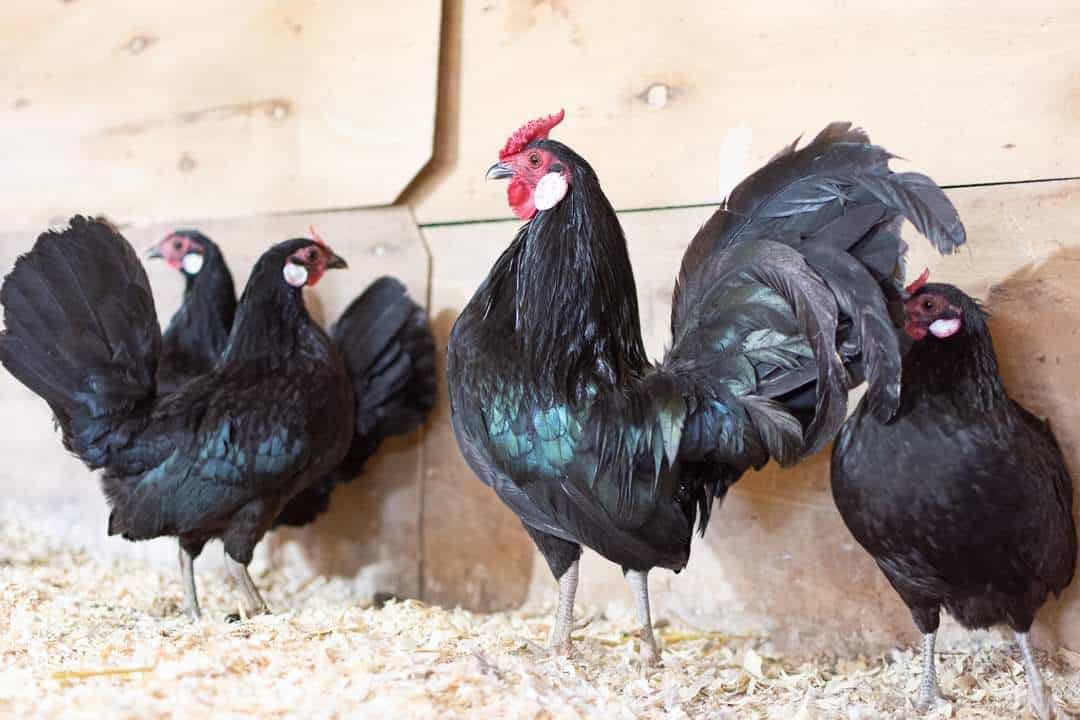
Like most bantam breeds, the Rosecomb Bantam has a smaller space requirement than larger breeds. This comes out to a minimum of:
- 2 square feet per bird in the coop
- 1 lateral foot of perching space per bird
- 4 square feet per bird in a run
Because Rosecomb Bantams are such good fliers, they require a greater level of confinement than other birds. Chicken runs and possibly even your yard should be covered to prevent them from flying off.
Rosecomb Bantams love to free range, and they do well at it, but they can escape easily and are small enough for predators to view them as an easy snack. Make sure any area you keep them in is secure.
While they do well in both heat and cold, you should take care to insulate their coop and provide plenty of shade and water. The long tip of the Rosecomb Bantam is more prone to frostbite, and their small bodies won’t keep warm as easily.
Conclusion
Rosecomb Bantams are beautiful birds that deserve every ounce of the attention they get.
If you decide to add them to your flock, remember to:
- Focus on accepted colors if you intend to show your birds
- Provide adequate shelter to keep them inside and safe while keeping predators out
- Pay attention to what you feed your flock
- Introduce them to any other animals early on
With the right level of care, these chickens can provide years of companionship. If you’re on the fence about the breed, feel free to ask us any questions that are holding you back.

